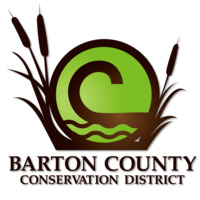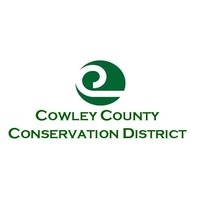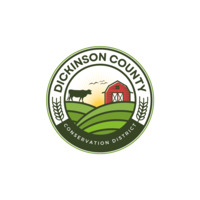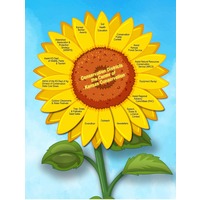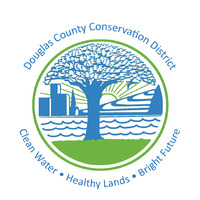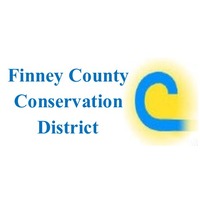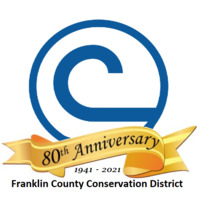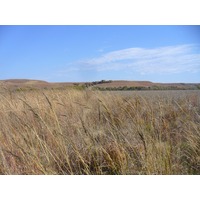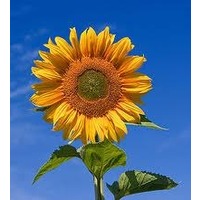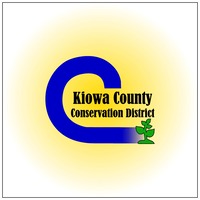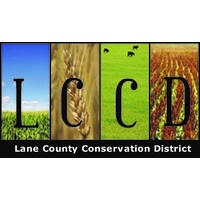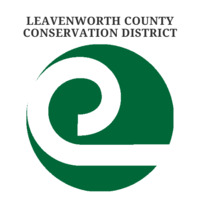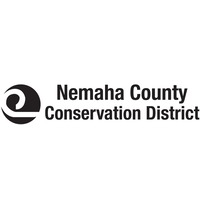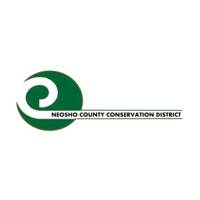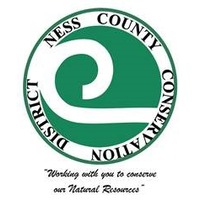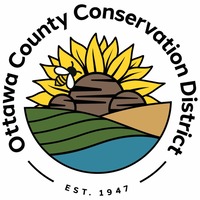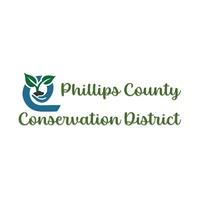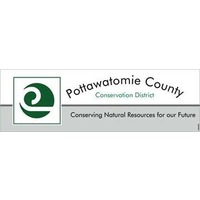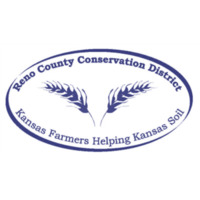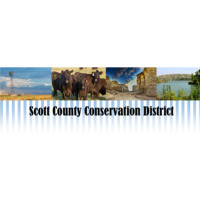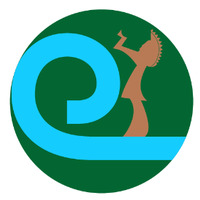Conservation Districts
The Conservation District is the primary local unit of government responsible for the conservation of soil, water, and related natural resources within its county’s boundary.
Please contact your Conservation District for program availability or to see how you can become more involved in conserving soil and water for future generations.
Consider attending your local conservation district annual meeting to learn more about the district, the programs and services they offer in your county. Click here for a complete list of 2024 annual meetings.

Allen County Conservation District
202 West Miller Road
Iola, KS 66749
Iola, KS 66749
Anderson County Conservation District
111 N Maple
Garnett, KS 66032
Garnett, KS 66032
(785) 448-6323
Atchison County Conservation District
605 6th Street
Effingham, KS 66023
Effingham, KS 66023
(913) 833-5740
(620) 792-3346
Bourbon County Conservation District
1515 S. Judson Ste. B
Fort Scott, KS 66701
Fort Scott, KS 66701
(620) 223-3170
Butler County Conservation District
2503 Enterprise Ave
El Dorado, KS 67042
El Dorado, KS 67042
Chase/Lyon County Conservation District
3020 West 18th Avenue
Emporia, KS 66801
Emporia, KS 66801
(620) 343-2812
Chautauqua/Elk County Conservation District
133 N Wabash Street
Howard, KS 67349
Howard, KS 67349
(620) 374-2511
Clark County Conservation District
411 Main
Ashland, KS 67831
Ashland, KS 67831
(620) 635-2843
Clay County Conservation District
921 W Crawford St
Clay Center, KS 67432
Clay Center, KS 67432
Coffey County Conservation District
313 Cross Street
Burlington, KS 66839
Burlington, KS 66839
Comanche County Conservation District
102 N. New York St.
Coldwater, KS 67029
Coldwater, KS 67029
Crawford County Conservation District
207 S Summit St
Girard, KS 66743
Girard, KS 66743
(620) 724-8231
Decatur County Conservation District
410 South Buffalo Ave.
Oberlin, KS 67749
Oberlin, KS 67749
(785) 475-3131
(785) 985-2221
Ellis County Conservation District
2715 Canterbury Drive
Hays, KS 67601
Hays, KS 67601
Ellsworth County Conservation District
402 W 15th Street
Ellsworth, KS 67439
Ellsworth, KS 67439
(785) 472-3161
(620) 805-3922
(785) 238-4251
Graham County Conservation District
100 N 12th Ave
Hill City, KS 67642
Hill City, KS 67642
(785) 421-2115
(620) 356-1744
Greeley County Conservation District
P.O. Box 400
Tribune, KS 67879
Tribune, KS 67879
(620) 583-5544
Harvey County Conservation District
1405 S Spencer Rd
Newton, KS 67114
Newton, KS 67114
(316) 282-3460
(620) 675-2324
Hodgeman County Conservation District
321 Main Street
Jetmore, KS 67854
Jetmore, KS 67854
(620) 357-8334
(785) 364-3329
(785) 863-2221
(785) 378-3731
Johnson County Conservation District
11811 S Sunset Dr, STE 1500
Olathe, KS 66061
Olathe, KS 66061
(913) 715-7022
(620) 355-7511
Kingman County Conservation District
1157 East Highway 54
Kingman, KS 67068
Kingman, KS 67068
(620) 532-3116
(620) 723-2146
Labette County Conservation District
115 West 4th Street
Altamont, KS 67330
Altamont, KS 67330
(620) 397-5751
(785) 524-4482
(913) 795-2940
Logan County Conservation District
1015 West 2nd St
Oakley, KS 67748
Oakley, KS 67748
(785) 953-4018
Marion County Conservation District
303 Eisenhower Drive
Marion, KS 66861
Marion, KS 66861
(620) 382-3714
(785) 562-5343
McPherson County Conservation District
200 S. Centennial Dr
McPherson, KS 67460
McPherson, KS 67460
(620) 241-1836
Meade County Conservation District
309 N. Post Street
Meade, KS 67864
Meade, KS 67864
(620) 873-2291
Mitchell County Conservation District
1100 N Independence Ave
Beloit, KS 67420
Beloit, KS 67420
(785) 738-5172
Montgomery County Conservation District
410 Peter Pan Road
Independence, KS 67301
Independence, KS 67301
(620) 331-4860
Morris County Conservation District
116 Fox Street
Council Grove, KS 66846
Council Grove, KS 66846
(620) 767-5111
Morton County Conservation District
737 Vilymaca
Elkhart, KS 67950
Elkhart, KS 67950
(620) 697-1222
(785) 336-2186
(620) 244-3491
(785) 798-3911
Norton County Conservation District
113 N Norton Ave.
Norton, KS 67654
Norton, KS 67654
(785) 828-3458
Osborne County Conservation District
1117 W US Hwy 24
Osborne, KS 67473
Osborne, KS 67473
(785) 346-2128
(785) 392-3393
Pawnee County Conservation District
324 Main St.
Larned, KS 67550
Larned, KS 67550
(620) 285-2821
(785) 543-2732
(785) 457-3398
Pratt County Conservation District
299 NE SR 61
Pratt, KS 67124
Pratt, KS 67124
(620) 450-3218
(785) 626-3149
(620) 888-2033
Rice County Conservation District
1436 West Main Street
Lyons, KS 67554
Lyons, KS 67554
(620) 257-5184
Riley County Conservation District
3705 Miller Prkwy
Manhattan, KS 66503
Manhattan, KS 66503
Rooks County Conservation District
617 S Cedar
Stockton, KS 67669
Stockton, KS 67669
(785) 425-6302
Rush County Conservation District
1515 Oak Street La Crosse
LaCrosse, KS 67548
LaCrosse, KS 67548
(785) 483-5618
Saline County Conservation District
1410 E Iron Ave, Ste 12
Salina, KS 67401
Salina, KS 67401
(785) 825-8269
Seward County Conservation District
2310 N Kansas Ave
Liberal, KS 67901
Liberal, KS 67901
(620) 624-2421
Shawnee County Conservation District
3231 SW Van Buren St #2
Topeka, KS 66611
Topeka, KS 66611
Sheridan County Conservation District
1100 Main Street
Hoxie, KS 67740
Hoxie, KS 67740
Smith County Conservation District
319 Roger Barta Way
Smith Center, KS 66967
Smith Center, KS 66967
Stafford County Conservation District
804 E 1st Ave
St John, KS 67576
St John, KS 67576
(620) 549-3480
Stanton County Conservation District
101 East Grant Ave
Johnson, KS 67855
Johnson, KS 67855
(620) 492-2230
Sumner County Conservation District
320 N. Jefferson Ave.
Wellington, KS 67152
Wellington, KS 67152
(620) 326-2269
Trego County Conservation District
111 N Main
WaKeeney, KS 67672
WaKeeney, KS 67672
(785) 743-2191
Wabaunsee County Conservation District
107 E 6th St.
Alma, KS 66401
Alma, KS 66401
(785) 765-3329
Wallace County Conservation District
115 East 6th Street
Sharon Springs, KS 67758
Sharon Springs, KS 67758
(785) 852-4262
Washington County Conservation District
705 B Street
Washington, KS 66968
Washington, KS 66968
(785) 325-2321
Wichita County Conservation District
612 West Broadway
Leoti, KS 67861
Leoti, KS 67861
Wilson County Conservation District
930 N 2nd Street
Fredonia, KS 66736
Fredonia, KS 66736
(620) 378-2866
Wyandotte County Conservation District
Office at Ag Hall of Fame 630 N 126th St
Bonner Springs, KS 66012
Bonner Springs, KS 66012
(913) 334-6329


